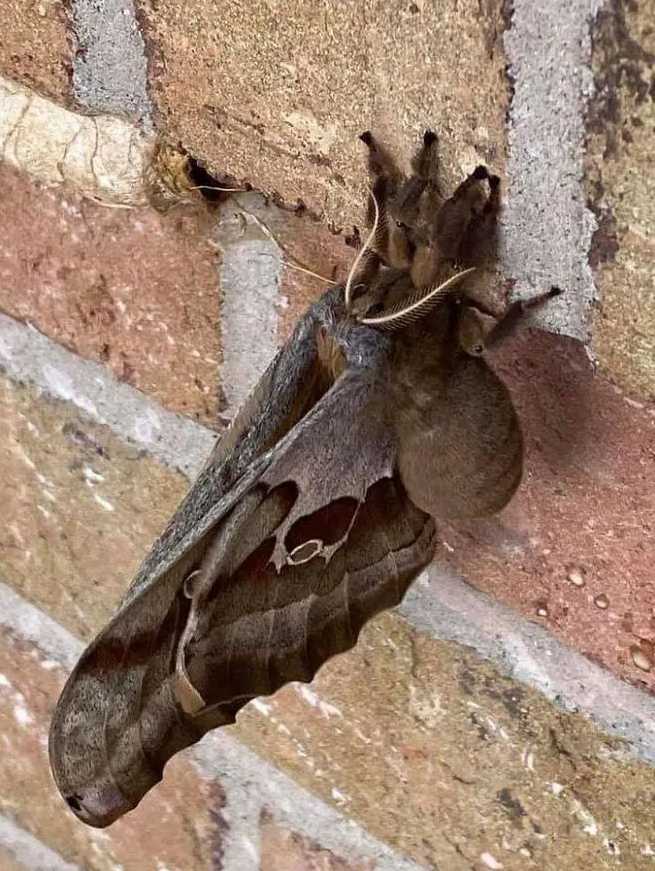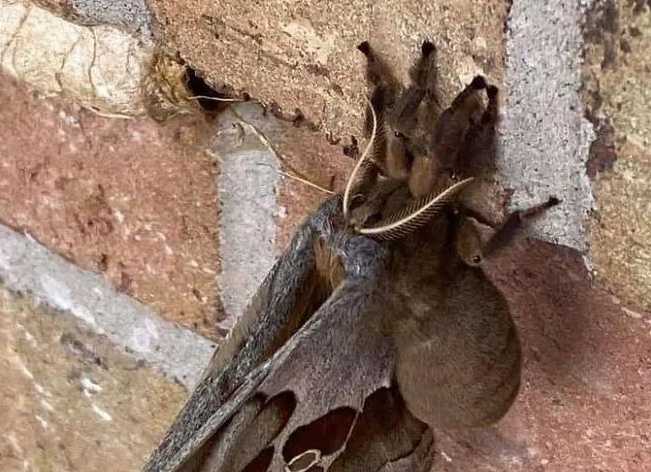The Polyphemus Moth: A Winged 'Wolf Spider' That Strikes Fear
The Polyphemus moth (Antheraea polyphemus), one of North America’s largest silk moths, has earned an eerie reputation for its appearance—some say it resembles a wolf spider with wings, a comparison that sends shivers down the spines of those unaccustomed to its imposing size and fuzzy texture. With a wingspan of up to 15 cm, this lepidopteran blends delicate wing patterns with a robust, hairy body, creating an uncanny hybrid of beauty and intimidation.

Source: Images from the Internet, if there is any infringement, please contact the removal of
A Hairy Giant with Startling Resemblance
The moth’s thorax and abdomen are covered in dense, tawny-colored setae (hairs) that mimic the fuzzy exoskeleton of a wolf spider, while its thick, jointed legs further enhance the illusion. When resting with its wings folded, the moth’s body profile and hairy texture can indeed evoke a large arachnid, especially from a distance. Its wings, however, tell a different story: translucent "windows" bordered by earthy brown and cream scales, with eye-like spots that deter predators by mimicking the gaze of a larger animal. This contrast between the hairy body and ornate wings creates a paradoxical appearance—part fearsome arachnid, part ethereal flyer.
The moth’s thorax and abdomen are covered in dense, tawny-colored setae (hairs) that mimic the fuzzy exoskeleton of a wolf spider, while its thick, jointed legs further enhance the illusion. When resting with its wings folded, the moth’s body profile and hairy texture can indeed evoke a large arachnid, especially from a distance. Its wings, however, tell a different story: translucent "windows" bordered by earthy brown and cream scales, with eye-like spots that deter predators by mimicking the gaze of a larger animal. This contrast between the hairy body and ornate wings creates a paradoxical appearance—part fearsome arachnid, part ethereal flyer.
Harmless Giant with a Short but Striking Life
Despite its intimidating look, the Polyphemus moth is entirely harmless to humans. As an adult, it lacks functional mouthparts, surviving only 1–2 weeks on energy stored from its caterpillar stage. Its sole purpose is to mate, with females releasing pheromones that males detect from miles away using their feathery antennae. Native to deciduous forests, the moth’s caterpillars feed on leaves of trees like oak and maple, transforming into pupae before emerging as the dramatic adults. While its wolf spider–like appearance may startle, it serves as a reminder of nature’s diverse strategies to survive—whether through mimicry, size, or sheer visual impact. For those who overcome their initial apprehension, the Polyphemus moth reveals itself as a gentle giant, a fleeting marvel of the insect world that proves beauty and intimidation can coexist in the same creature.
Despite its intimidating look, the Polyphemus moth is entirely harmless to humans. As an adult, it lacks functional mouthparts, surviving only 1–2 weeks on energy stored from its caterpillar stage. Its sole purpose is to mate, with females releasing pheromones that males detect from miles away using their feathery antennae. Native to deciduous forests, the moth’s caterpillars feed on leaves of trees like oak and maple, transforming into pupae before emerging as the dramatic adults. While its wolf spider–like appearance may startle, it serves as a reminder of nature’s diverse strategies to survive—whether through mimicry, size, or sheer visual impact. For those who overcome their initial apprehension, the Polyphemus moth reveals itself as a gentle giant, a fleeting marvel of the insect world that proves beauty and intimidation can coexist in the same creature.
-------- END --------






